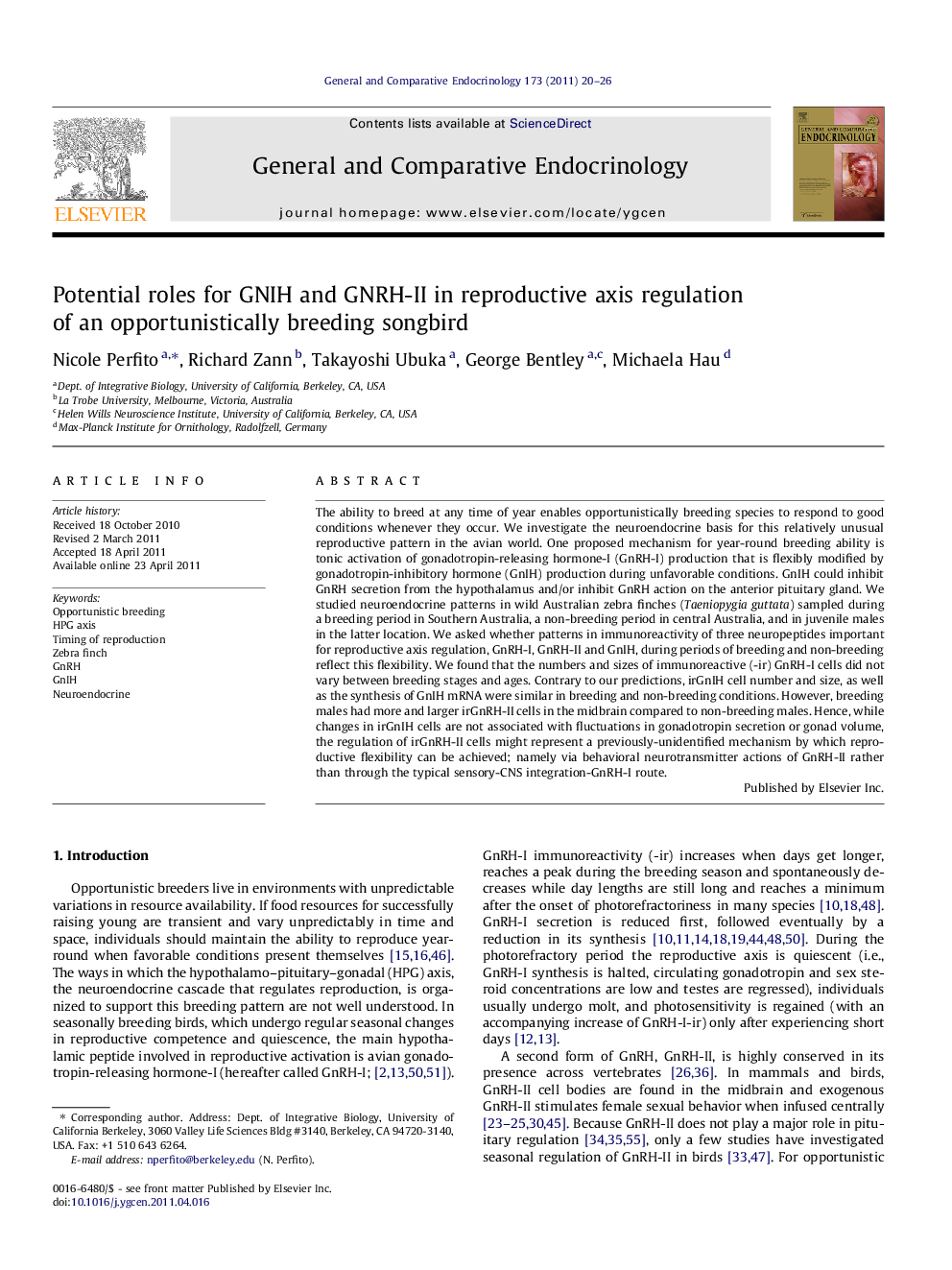| کد مقاله | کد نشریه | سال انتشار | مقاله انگلیسی | نسخه تمام متن |
|---|---|---|---|---|
| 2800880 | 1156132 | 2011 | 7 صفحه PDF | دانلود رایگان |

The ability to breed at any time of year enables opportunistically breeding species to respond to good conditions whenever they occur. We investigate the neuroendocrine basis for this relatively unusual reproductive pattern in the avian world. One proposed mechanism for year-round breeding ability is tonic activation of gonadotropin-releasing hormone-I (GnRH-I) production that is flexibly modified by gonadotropin-inhibitory hormone (GnIH) production during unfavorable conditions. GnIH could inhibit GnRH secretion from the hypothalamus and/or inhibit GnRH action on the anterior pituitary gland. We studied neuroendocrine patterns in wild Australian zebra finches (Taeniopygia guttata) sampled during a breeding period in Southern Australia, a non-breeding period in central Australia, and in juvenile males in the latter location. We asked whether patterns in immunoreactivity of three neuropeptides important for reproductive axis regulation, GnRH-I, GnRH-II and GnIH, during periods of breeding and non-breeding reflect this flexibility. We found that the numbers and sizes of immunoreactive (-ir) GnRH-I cells did not vary between breeding stages and ages. Contrary to our predictions, irGnIH cell number and size, as well as the synthesis of GnIH mRNA were similar in breeding and non-breeding conditions. However, breeding males had more and larger irGnRH-II cells in the midbrain compared to non-breeding males. Hence, while changes in irGnIH cells are not associated with fluctuations in gonadotropin secretion or gonad volume, the regulation of irGnRH-II cells might represent a previously-unidentified mechanism by which reproductive flexibility can be achieved; namely via behavioral neurotransmitter actions of GnRH-II rather than through the typical sensory-CNS integration-GnRH-I route.
► Wild adult male zebra finches maintain steady availability of GnRH-I during breeding and non-breeding periods.
► Neither ir-GnIH nor synthesis of GnIH were different during breeding and non-breeding periods.
► Wild adult males had more GnRH-II neurons that tended to be bigger during breeding compared to non-breeding periods.
► These data might represent a previously unidentified mechanism by which reproductive flexibility can be achieved.
Journal: General and Comparative Endocrinology - Volume 173, Issue 1, 1 August 2011, Pages 20–26